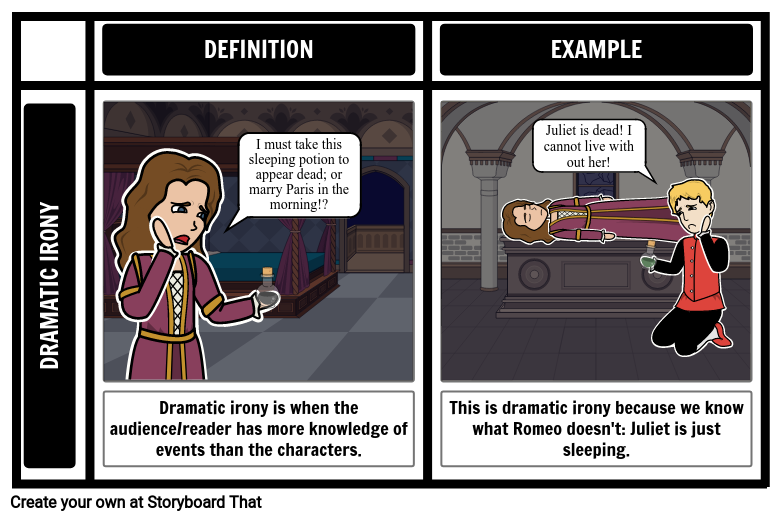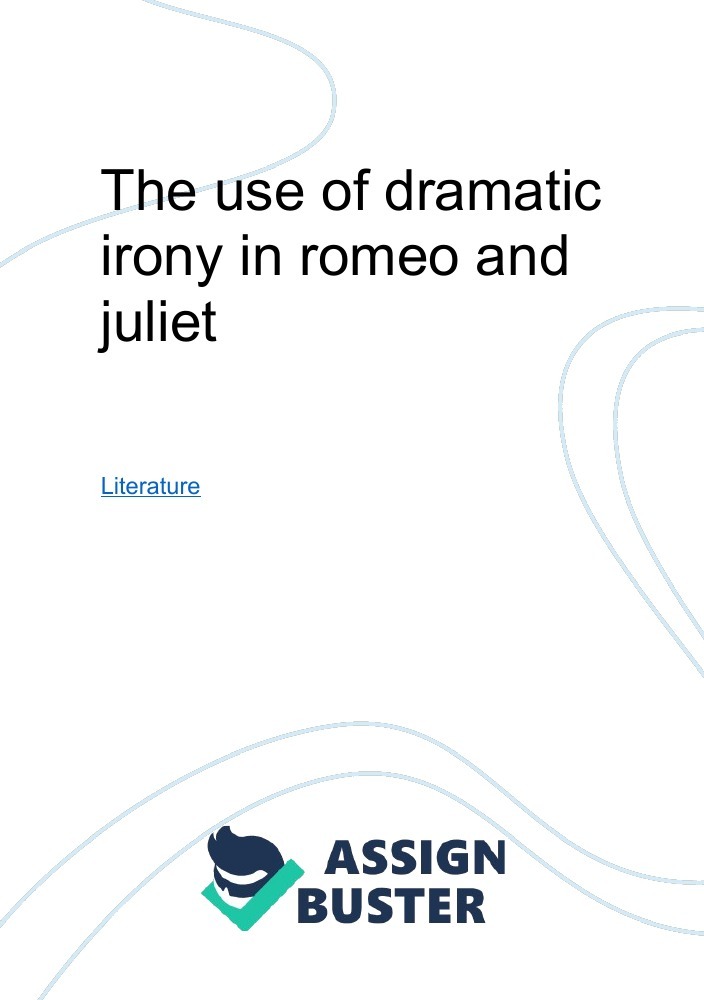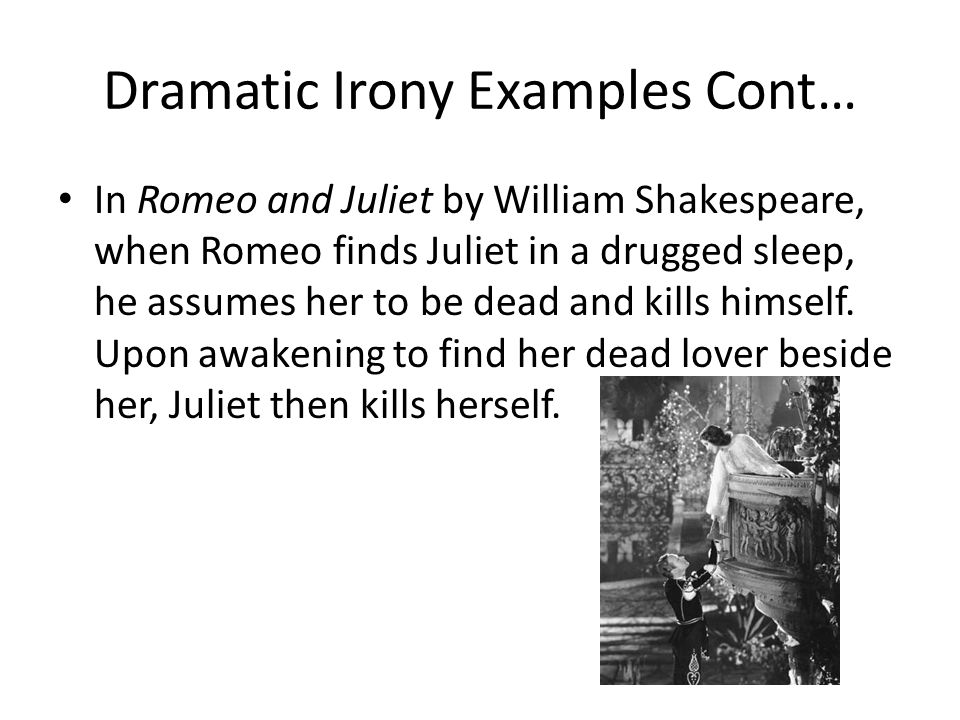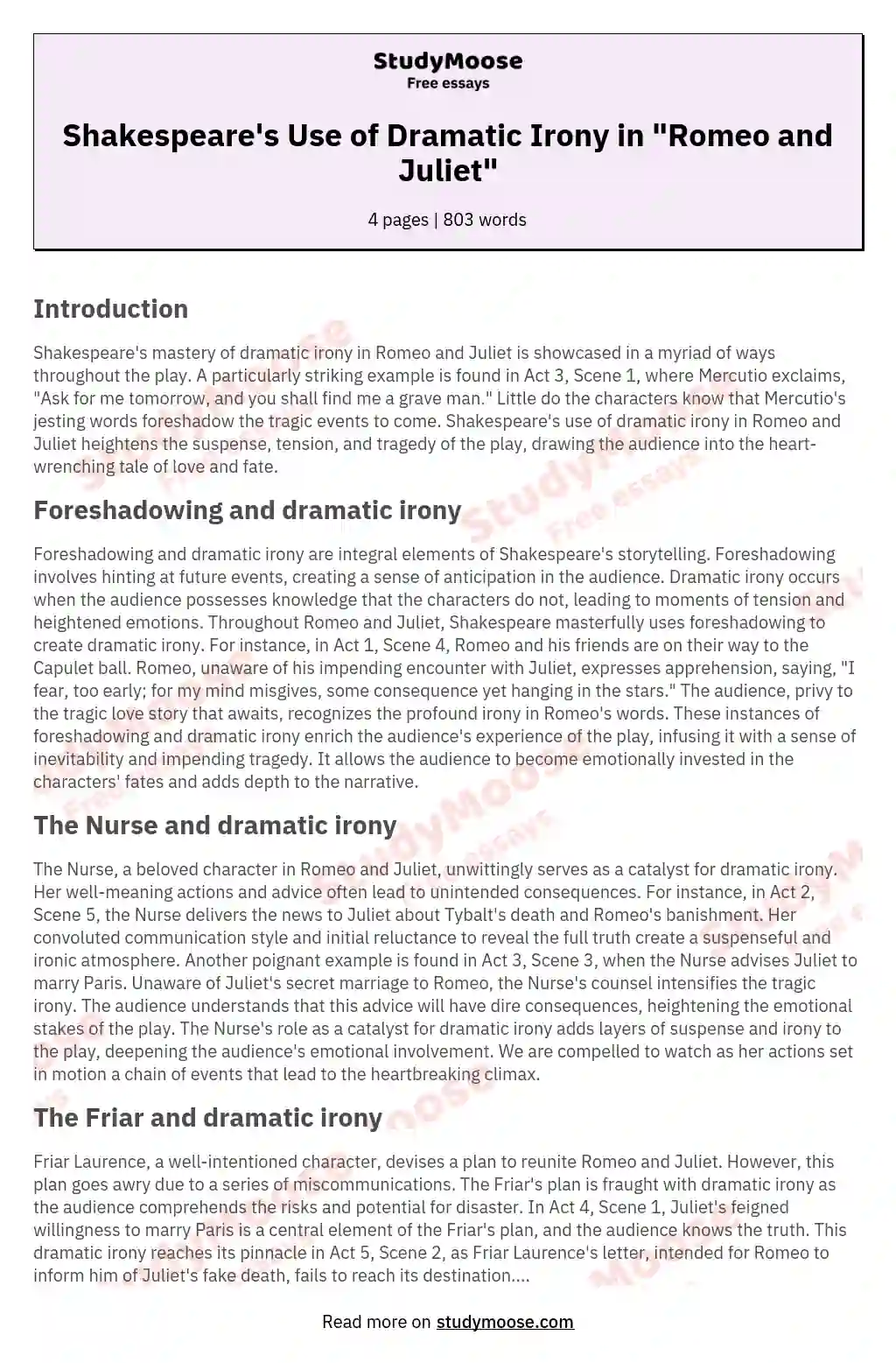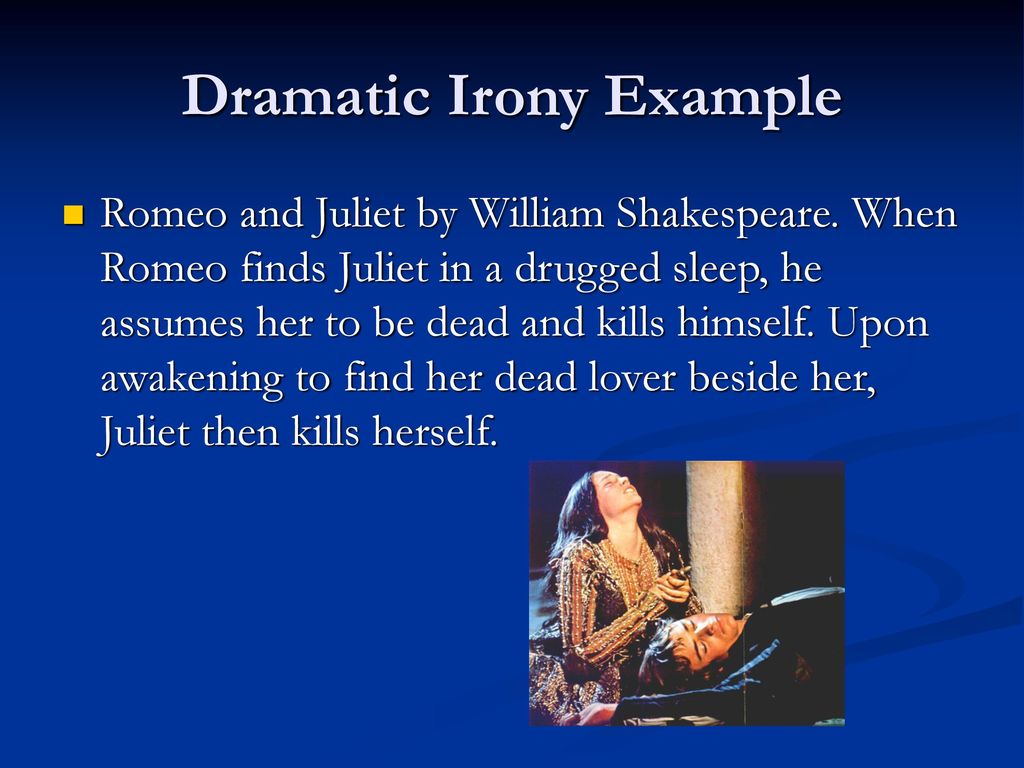Example Of Dramatic Irony In Romeo And Juliet
Example Of Dramatic Irony In Romeo And Juliet - In william shakespeare’s tragedy romeo and juliet, dramatic irony is used from the prologue, where the audience is told that romeo and. Dramatic irony in shakespeare's romeo and juliet is prevalent throughout the play, enhancing tension and tragedy. The examples we've looked at show just how powerful dramatic irony can be in shaping a story like romeo and juliet. Learn how shakespeare uses dramatic irony to create suspense and deepen the emotional impact of his tragic love story. Using dramatic irony, shakespeare fills his characters' actions and dialogue with a deeper meaning, forcing the audience to confront the. Learn how shakespeare uses dramatic irony to create tension, humor, and poignancy in his timeless tragedy. Romeo and juliet is frequently cited as a prime example of dramatic irony for its famous conclusion in act 5, scene 3.
The examples we've looked at show just how powerful dramatic irony can be in shaping a story like romeo and juliet. Romeo and juliet is frequently cited as a prime example of dramatic irony for its famous conclusion in act 5, scene 3. Learn how shakespeare uses dramatic irony to create tension, humor, and poignancy in his timeless tragedy. In william shakespeare’s tragedy romeo and juliet, dramatic irony is used from the prologue, where the audience is told that romeo and. Learn how shakespeare uses dramatic irony to create suspense and deepen the emotional impact of his tragic love story. Dramatic irony in shakespeare's romeo and juliet is prevalent throughout the play, enhancing tension and tragedy. Using dramatic irony, shakespeare fills his characters' actions and dialogue with a deeper meaning, forcing the audience to confront the.
Using dramatic irony, shakespeare fills his characters' actions and dialogue with a deeper meaning, forcing the audience to confront the. The examples we've looked at show just how powerful dramatic irony can be in shaping a story like romeo and juliet. Romeo and juliet is frequently cited as a prime example of dramatic irony for its famous conclusion in act 5, scene 3. In william shakespeare’s tragedy romeo and juliet, dramatic irony is used from the prologue, where the audience is told that romeo and. Dramatic irony in shakespeare's romeo and juliet is prevalent throughout the play, enhancing tension and tragedy. Learn how shakespeare uses dramatic irony to create tension, humor, and poignancy in his timeless tragedy. Learn how shakespeare uses dramatic irony to create suspense and deepen the emotional impact of his tragic love story.
PPT THREE TYPES OF IRONY PowerPoint Presentation ID1060135
Romeo and juliet is frequently cited as a prime example of dramatic irony for its famous conclusion in act 5, scene 3. The examples we've looked at show just how powerful dramatic irony can be in shaping a story like romeo and juliet. Dramatic irony in shakespeare's romeo and juliet is prevalent throughout the play, enhancing tension and tragedy. Using.
Dramatic Irony in Romeo and Juliet Storyboard by rebeccaray
Romeo and juliet is frequently cited as a prime example of dramatic irony for its famous conclusion in act 5, scene 3. Dramatic irony in shakespeare's romeo and juliet is prevalent throughout the play, enhancing tension and tragedy. In william shakespeare’s tragedy romeo and juliet, dramatic irony is used from the prologue, where the audience is told that romeo and..
3 Types of Irony in Literature Irony Definition & Examples
Learn how shakespeare uses dramatic irony to create tension, humor, and poignancy in his timeless tragedy. Learn how shakespeare uses dramatic irony to create suspense and deepen the emotional impact of his tragic love story. Using dramatic irony, shakespeare fills his characters' actions and dialogue with a deeper meaning, forcing the audience to confront the. The examples we've looked at.
Examples of Dramatic Irony in Romeo and Juliet Free Essay 894 Words
Dramatic irony in shakespeare's romeo and juliet is prevalent throughout the play, enhancing tension and tragedy. Learn how shakespeare uses dramatic irony to create suspense and deepen the emotional impact of his tragic love story. Learn how shakespeare uses dramatic irony to create tension, humor, and poignancy in his timeless tragedy. Using dramatic irony, shakespeare fills his characters' actions and.
What is an example of dramatic irony in Romeo and Juliet Act 1? YouTube
In william shakespeare’s tragedy romeo and juliet, dramatic irony is used from the prologue, where the audience is told that romeo and. Learn how shakespeare uses dramatic irony to create suspense and deepen the emotional impact of his tragic love story. Using dramatic irony, shakespeare fills his characters' actions and dialogue with a deeper meaning, forcing the audience to confront.
The use of dramatic irony in romeo and juliet Essay Example for 780 Words
Using dramatic irony, shakespeare fills his characters' actions and dialogue with a deeper meaning, forcing the audience to confront the. The examples we've looked at show just how powerful dramatic irony can be in shaping a story like romeo and juliet. Dramatic irony in shakespeare's romeo and juliet is prevalent throughout the play, enhancing tension and tragedy. Learn how shakespeare.
Dramatic Irony In Romeo And Juliet
Learn how shakespeare uses dramatic irony to create tension, humor, and poignancy in his timeless tragedy. Using dramatic irony, shakespeare fills his characters' actions and dialogue with a deeper meaning, forcing the audience to confront the. Romeo and juliet is frequently cited as a prime example of dramatic irony for its famous conclusion in act 5, scene 3. Dramatic irony.
Take a look at our dramatic irony storyboard for Romeo and Juliet
Learn how shakespeare uses dramatic irony to create suspense and deepen the emotional impact of his tragic love story. The examples we've looked at show just how powerful dramatic irony can be in shaping a story like romeo and juliet. In william shakespeare’s tragedy romeo and juliet, dramatic irony is used from the prologue, where the audience is told that.
Shakespeare's Use of Dramatic Irony in "Romeo and Juliet" Free Essay
Romeo and juliet is frequently cited as a prime example of dramatic irony for its famous conclusion in act 5, scene 3. Learn how shakespeare uses dramatic irony to create suspense and deepen the emotional impact of his tragic love story. Learn how shakespeare uses dramatic irony to create tension, humor, and poignancy in his timeless tragedy. Using dramatic irony,.
Dramatic Irony In Romeo And Juliet
Learn how shakespeare uses dramatic irony to create suspense and deepen the emotional impact of his tragic love story. Romeo and juliet is frequently cited as a prime example of dramatic irony for its famous conclusion in act 5, scene 3. Dramatic irony in shakespeare's romeo and juliet is prevalent throughout the play, enhancing tension and tragedy. In william shakespeare’s.
In William Shakespeare’s Tragedy Romeo And Juliet, Dramatic Irony Is Used From The Prologue, Where The Audience Is Told That Romeo And.
Romeo and juliet is frequently cited as a prime example of dramatic irony for its famous conclusion in act 5, scene 3. Dramatic irony in shakespeare's romeo and juliet is prevalent throughout the play, enhancing tension and tragedy. Learn how shakespeare uses dramatic irony to create suspense and deepen the emotional impact of his tragic love story. Learn how shakespeare uses dramatic irony to create tension, humor, and poignancy in his timeless tragedy.
The Examples We've Looked At Show Just How Powerful Dramatic Irony Can Be In Shaping A Story Like Romeo And Juliet.
Using dramatic irony, shakespeare fills his characters' actions and dialogue with a deeper meaning, forcing the audience to confront the.


